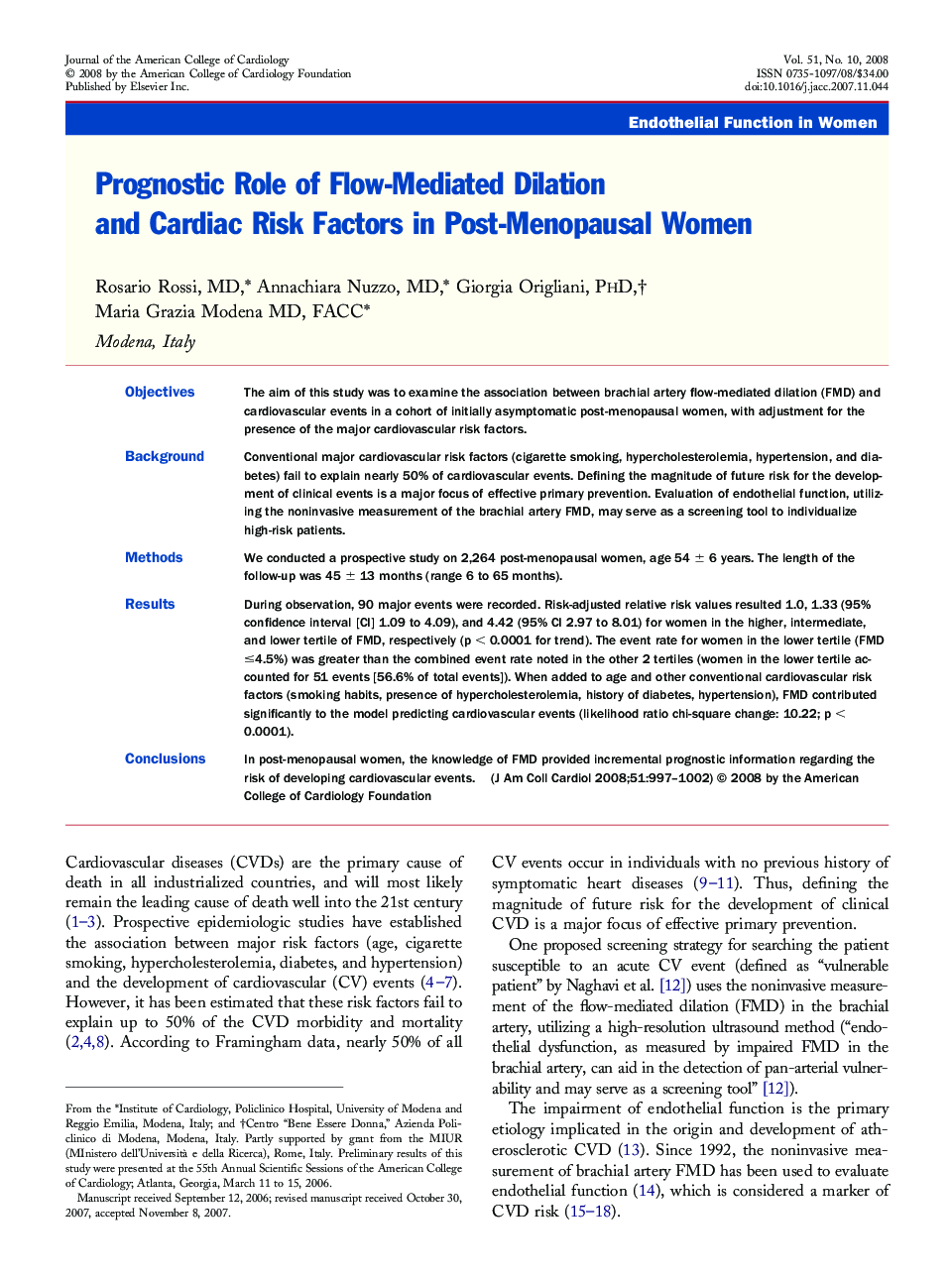| Article ID | Journal | Published Year | Pages | File Type |
|---|---|---|---|---|
| 2953597 | Journal of the American College of Cardiology | 2008 | 6 Pages |
ObjectivesThe aim of this study was to examine the association between brachial artery flow-mediated dilation (FMD) and cardiovascular events in a cohort of initially asymptomatic post-menopausal women, with adjustment for the presence of the major cardiovascular risk factors.BackgroundConventional major cardiovascular risk factors (cigarette smoking, hypercholesterolemia, hypertension, and diabetes) fail to explain nearly 50% of cardiovascular events. Defining the magnitude of future risk for the development of clinical events is a major focus of effective primary prevention. Evaluation of endothelial function, utilizing the noninvasive measurement of the brachial artery FMD, may serve as a screening tool to individualize high-risk patients.MethodsWe conducted a prospective study on 2,264 post-menopausal women, age 54 ± 6 years. The length of the follow-up was 45 ± 13 months (range 6 to 65 months).ResultsDuring observation, 90 major events were recorded. Risk-adjusted relative risk values resulted 1.0, 1.33 (95% confidence interval [CI] 1.09 to 4.09), and 4.42 (95% CI 2.97 to 8.01) for women in the higher, intermediate, and lower tertile of FMD, respectively (p < 0.0001 for trend). The event rate for women in the lower tertile (FMD ≤4.5%) was greater than the combined event rate noted in the other 2 tertiles (women in the lower tertile accounted for 51 events [56.6% of total events]). When added to age and other conventional cardiovascular risk factors (smoking habits, presence of hypercholesterolemia, history of diabetes, hypertension), FMD contributed significantly to the model predicting cardiovascular events (likelihood ratio chi-square change: 10.22; p < 0.0001).ConclusionsIn post-menopausal women, the knowledge of FMD provided incremental prognostic information regarding the risk of developing cardiovascular events.
